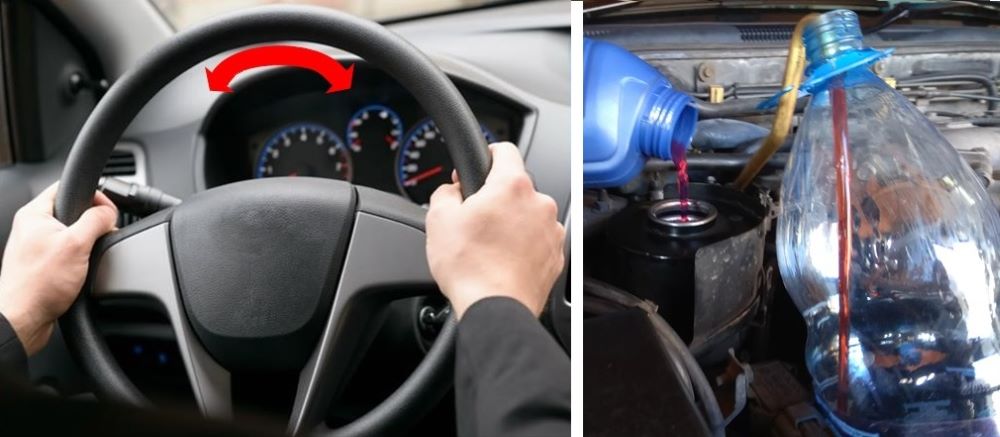Flushing a power steering system
Flushing a power steering system is the process of replacing the old steering fluid with a new one. This is done when the manufacturer specifies replacement dates when the fluid is contaminated or dirty or after mechanical problems with the steering pump or gear that can cause metal shavings to circulate through the hydraulic system.
When changing, use only the type of power steering fluid recommended by the vehicle manufacturer. A special device can be used to flush the steering system, which injects new fluid under pressure, displacing the old one without introducing air. Air introduced into the hydraulic part of the steering system can be detrimental to the steering pump. The steering pump is lubricated by steering fluid during operation. When the pump is running dry, it can clog. If air gets into the hydraulic part, apply the procedure for bleeding from the steering system.
When you don’t have a device to replace the steering fluid, you can perform the flushing manually by following the procedure described here. Always remember that power steering fluid is flammable, and if it gets on hot parts of the engine and exhaust system it can cause a fire.
Flushing a power steering system
As much old power steering fluid as possible is removed from the reservoir. Lift the vehicle or only the front part so that the front wheels do not touch the ground. Remove the return hose from the tank and insert it into a suitable container. Close the return line connection on the reservoir. Add new power steering fluid to the maximum.
Start the engine, and have an assistant turn the steering wheel from lock to lock. The level of steering fluid in the reservoir is monitored, with the new added continuously up to the maximum mark.
When the fluid coming out of the return hose is clear, stop adding fluid, and keep running the engine until the level in the reservoir is just below the return line inlet. After that, turn off the engine.
The return hose is mounted on the reservoir and a new power steering fluid is added to the maximum. The engine starts again and turns the steering wheel from lock to lock to extract the air and fill the hydraulic part with fluid. After that, turn off the engine, and fluid is added. Lower the vehicle, start the engine, and turn the steering wheel from lock to lock to check that the system is working correctly with the vehicle weight on the tires. We dispose of waste steering fluid in an environmentally approved manner and place.
To flushing a power steering system, follow these steps:






